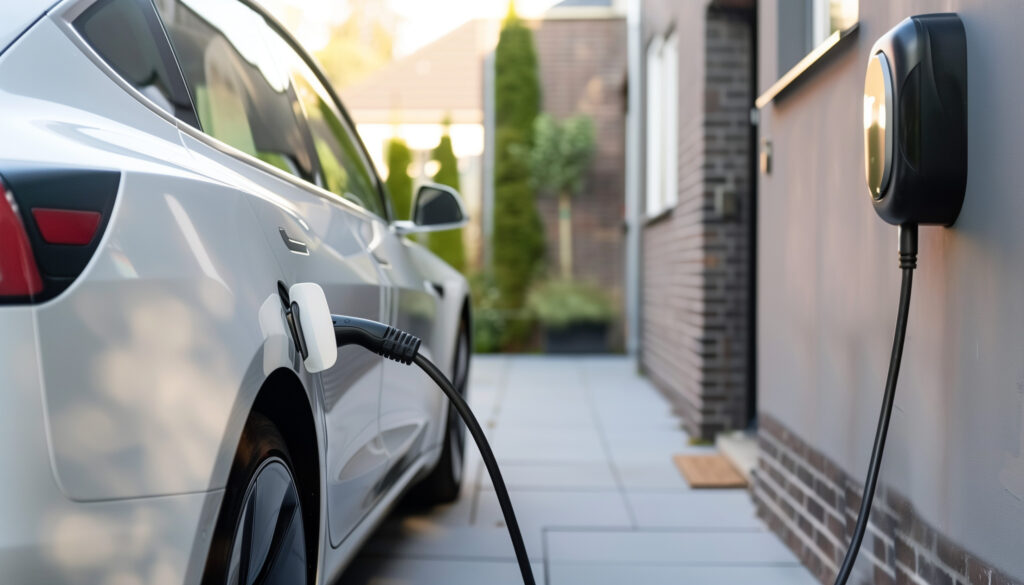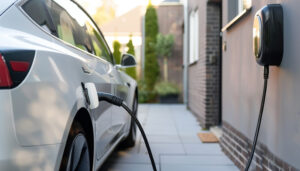As electric vehicles (EVs) continue to gain popularity, understanding the infrastructure that supports them, particularly electric vehicle chargers, becomes increasingly important. Whether you’re a new EV owner or considering making the switch, knowing the differences between various EV chargers will help you make informed decisions. This blog post will walk you through the main types of EV chargers, their differences, and how to choose the right one for your needs.
The Basics of EV Charging
Before diving into the types of chargers, it’s essential to understand the basics of EV charging. Electric vehicles rely on batteries that need to be charged, much like how a smartphone requires charging. However, unlike filling a gas tank, charging an EV can take anywhere from a few minutes to several hours, depending on the charger type.
EV chargers are categorized by the speed at which they recharge a vehicle’s battery, which is directly related to the amount of electrical power they deliver. These chargers can be broadly classified into three levels: Level 1, Level 2, and DC Fast Charging (Level 3).
Level 1 Chargers: The Basic Option
Charging Speed: 2 to 5 miles of range per hour
Voltage: 120V (standard household outlet)
Level 1 chargers are the most basic type of EV charger. They use a standard household outlet (120 volts) and deliver the slowest charging speeds. With a Level 1 charger, you can expect to add about 2 to 5 miles of range per hour of charging.
These chargers are typically included with the purchase of an electric vehicle, making them a cost-effective option. However, due to their slow charging speed, Level 1 chargers are best suited for overnight charging at home or for drivers who cover short distances daily.
When to Use Level 1 Chargers:
• Ideal for home use if you drive less than 40 miles a day.
• Suitable for plug-in hybrid vehicles with smaller batteries.
• Great for situations where charging overnight or for extended periods is possible.
Level 2 Chargers: The Most Common Choice
Charging Speed: 10 to 60 miles of range per hour
Voltage: 240V (commonly found in homes and commercial settings)
Level 2 chargers are the most common type of charger used by EV owners. These chargers require a 240-volt outlet, similar to what you would use for an electric dryer or oven. They provide a significant increase in charging speed, adding between 10 to 60 miles of range per hour, depending on the vehicle and charger capacity.
Level 2 chargers are widely available in public charging stations, workplaces, and homes. They offer a good balance between cost and charging speed, making them ideal for daily use.
When to Use Level 2 Chargers:
• Perfect for home installation if you need faster charging overnight.
• Commonly found in public charging stations, making them convenient for on-the-go charging.
• Ideal for drivers who need to recharge quickly between trips.
DC Fast Chargers (Level 3): The Fastest Option
Charging Speed: 60 to 100+ miles of range in 20-30 minutes
Voltage: 400V to 900V
DC Fast Chargers, also known as Level 3 chargers, are the fastest charging option available today. These chargers use direct current (DC) rather than alternating current (AC), which allows them to deliver a substantial amount of power quickly. Depending on the charger and the vehicle, you can add over 60 to 100 miles of range in just 20 to 30 minutes.
However, DC Fast Chargers are typically found at commercial locations, such as highway rest stops, shopping centers, and dedicated EV charging stations. They are not generally suitable for home installation due to their high cost and power requirements.
When to Use DC Fast Chargers:
• Ideal for long road trips where you need to recharge quickly.
• Perfect for commercial fleets and high-traffic public areas.
• Useful when you need to top up your battery quickly while on the go.
Choosing the Right Charger for Your Needs
Selecting the right EV charger depends on your driving habits, vehicle type, and where you plan to do most of your charging. Here’s a quick guide to help you decide:
• For Home Use: If you have a short daily commute, a Level 1 charger may suffice. However, a Level 2 charger is recommended for faster overnight charging.
• For Public Charging: Level 2 chargers are widely available and suitable for most needs. Look for DC Fast Chargers when you’re on a long trip and need to recharge quickly.
• For Businesses: Installing Level 2 chargers at workplaces can encourage EV adoption among employees, while DC Fast Chargers can attract EV drivers to commercial locations.
Conclusion
As electric vehicles become more mainstream, understanding the differences between EV chargers is crucial for making the most of your EV ownership experience. Whether you’re charging at home, on the road, or at work, knowing which type of charger to use can save you time and enhance your convenience.
By choosing the right EV charger for your needs, you can ensure that your electric vehicle is always ready to go, keeping you charged up and on the move.
If you have any questions or if you want a free estimate for an EV charger installation, please call or text Genuine Electric today!





